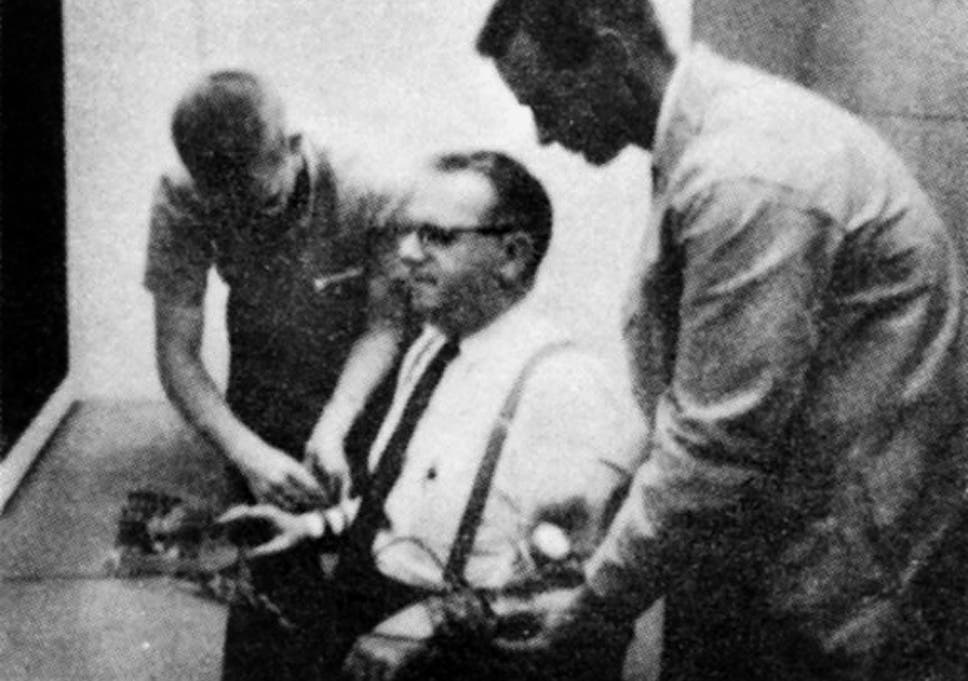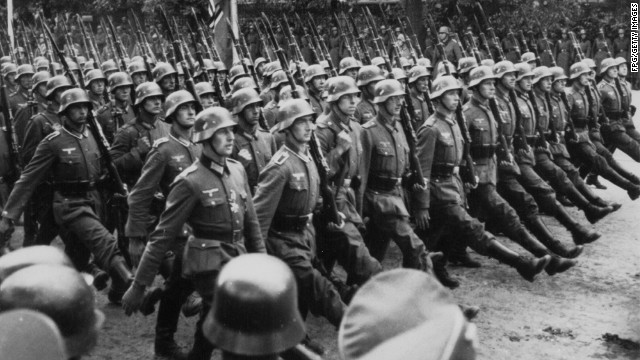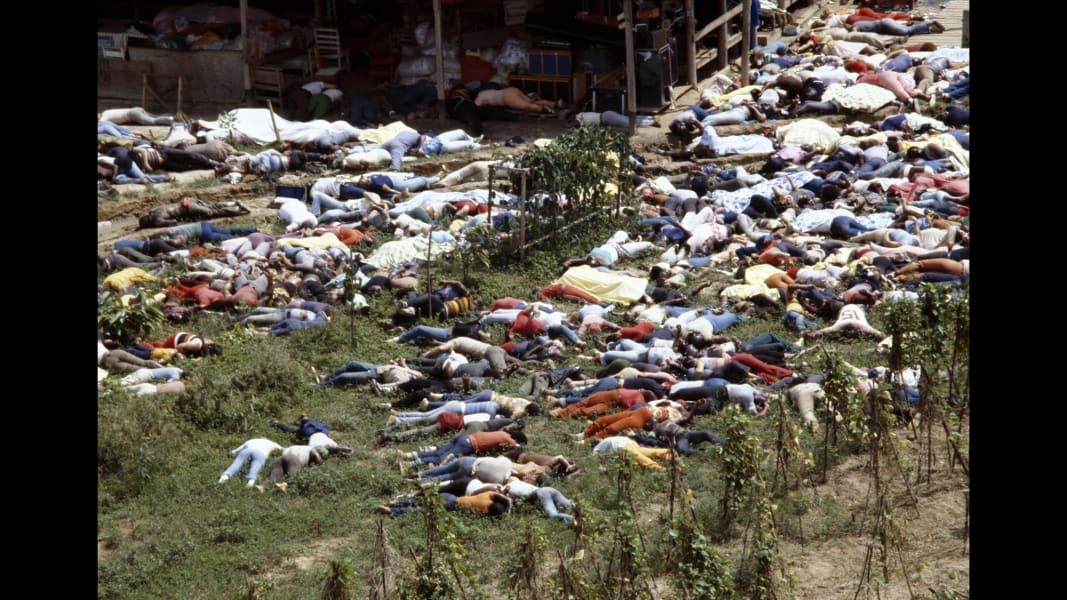I have an economics degree with a minor in sociology. The reason I have that is because I want to do a ministry in urban areas and help with underprivileged kids.
Interaction in Groups
(Part B)
by
Charles Lamson
Formal Organizations and Bureaucracy
Informal organizations are groups whose norms and statuses are generally agreed upon but are not set down in writing. Usually such groups have leaders who help create and enforce the group's norms but have no formal leadership position.
 |
Formal organizations have explicit (often written) set of norms, statuses, and roles that specify each member's relationships to the others and the conditions under which those relationships hold. Organization charts and job descriptions are typical of such organizations. Formal organizations take a wide variety of forms. For example, the New England town meeting is composed of residents of a town who gather to debate and discuss any issues the members wish to raise. If the tenants association of an urban apartment building is also composed of people who reside in a specific place, but its scope of action is usually limited to housing issues both of these are formal organizations because there are rules defining who may participate and the scope and manner of that participation. As is true in many formal organizations, the members of town meetings and tenants associations try to arrive at decisions through some form of democratic process---that is, by adhering to norms that allow the majority to run the organization but not to infringe on the rights of the minority.
A familiar type of formal organization is the voluntary association. People join groups like the PTA or the Rotary Club to pursue interests they share with other members of the group. Voluntary associations are usually democratically run, at least in principle, and have rules and regulations and an administrative staff. Churches, fraternal organizations, political clubs, and neighborhood improvement groups are examples of voluntary associations often found in American communities. Sociologists study these associations in order to understand how well or poorly people are integrated into their society.
Bureaucracies are another common type of formal organization. A bureaucracy is a specific structure of statuses and roles in which the power to influence the actions of others increases as one nears the top of the organization; this is in marked contrast to the democratic procedures used in other kinds of organizations. Voluntary associations, for example, usually have some of the elements of bureaucracies, but they are run as democratic structures in which power is based on majority rule rather than on executive orders as is the case in pure bureaucracies like General Motors or the U. S. Army (Image 1 - shown below).

IMAGE 1 U. S. Army
We owe much of our understanding of bureaucracies to the work of Max Weber, who identified the following typical aspects of most bureaucratic organizations:
Weber believed that bureaucracy made human social life more "rational" than it had ever been in the past. Rules, impersonality, and the norm of efficiency are some of the ways in which bureaucracies "rationalize" human societies. By this Weber meant that society becomes dominated by groups organized so that the interactions of their members will maximize the group's efficiency. Once the group's goals have been set, the officials in a bureaucracy can seek the most efficient means of reaching those goals. All the less rational behaviors of human groups, such as magic and ritual, are avoided by groups organized as bureaucracies. But the people in a bureaucracy may not take full responsibility for their actions. For this and other reasons, therefore, Weber had some misgivings about the consequences of the increasing dominance of bureaucratic groups in modern societies.
Bureaucracy and Obedience to Authority
Which leads us to a study of group pressure that raised serious questions about most people's ability to resist such pressure, a study of conformity, very powerful in its implication and disturbing in its methods, a series of experiments on obedience to authority conducted by Stanley Milgram.
IMAGE 2 Stanley Milgram’s Electric Shock Experiment
Milgram's study was designed to "take a close look at the act of obeying." As Milgram described it:
Two people come to a psychology laboratory to take part in a study of memory and learning. One of them is designated as a "teacher" and the other as a "learner." The experimenter explains that the study is concerned with the effects of punishment on learning. The learner is conducted into a room, seated in a chair, his arms strapped to prevent excessive movement, and an electrode is attached to his wrist. He is told that he is to learn a list of word pairs; whenever he makes an error, he will receive electric shocks of increasing intensity. The real focus of the experiment is the teacher. After watching the learner being strapped into place, he is taken into the main experimental room and seated before an impressive shock generator. Its main feature is a horizontal line of 3D switches, ranging from 15 volts to 450 volts, in 15-volt increments. There are also verbal designations which range from SLIGHT SHOCK to DANGER---SEVERE SHOCK. The teacher is told that he is to administer the learning test to the man in the other room. When the learner responds correctly, the teacher moves on to the next item; when the other man gives an incorrect answer, the teacher is to give him an electric shock. He is to start at the lowest shock level (15 volts) and to increase the level each time the man makes an error, going through 30 volts, 45, and so on. ((1974). Obediance to Authority: An Experimental View, pp. 3-4)
The "learner" is an actor who pretends to suffer pain but receives no actual shock. The subject ("teacher") is a business person or an industrial worker or a student, someone who has been recruited by a classified ad offering payment for spare-time work in a university laboratory.

IMAGE 3 An Actor Portrays Milgram's "Learner"
Milgram was dismayed to discover that many of his subjects were willing to obey any order given by the experimenter. In the basic version of the experiment, in which the "learner" is in one room and the "teacher" in another from which the "learner" is visible but cannot be heard, 65% of the subjects administered the highest levels of shock, while the other 35% were obedient well into the intense shock levels.
Milgram used a functionalist argument to explain the high levels of obedience revealed in his experiment: In bureaucratic organizations people seek approval by adhering to the rules, which often absolve them of moral responsibility for their actions. But he also explored the conditions under which conflict will take place---that is, the conditions under which the subject will rebel against the experimenter. In situations in which subjects are forced to confront the consequences of their behavior, their ability to rely on "duty" to justify that behavior seems to be diminished.
Commitment to Bureaucratic Groups
Another question related to the impact of bureaucracy on individuals is how bureaucratic groups---which are based on unemotional and rational systems of recruitment, decision making, and reward---can sometimes attract strong commitment from their members. One possible answer is ideology: People believe in the goals and methods of the bureaucracy. Another explanation is that people within a bureaucracy form primary groups that maintain their commitment to the larger organization. There is considerable research evidence showing that both explanations are valid---both ideology and primary-group ties may operate to reinforce people's commitment to the organization. Several studies have addressed this question.
Primary Groups in Bureaucracies In one of those studies, Morris Janowitz and Edward Shils were assigned by the U. S. Army to study the attitudes of German soldiers captured during World War II. They were attempting to discover what had made the German army so effective and committed that isolated units continued to fight even in the face of certain defeat. As Shils explained it, he and Janowitz "discovered the influence of small, close-knit roofs on the conduct of their members in the performance of tasks set them from the outside" (Janowitz & Shils, 1948, The Cohesion and Disintegration of the Wehrmacht in World War II. Public Opinion Quarterly, 12, 280-315).

IMAGE 4 World War II German army
The soldiers of the German army behaved in this way not because of their ideological commitment to the Nazi cause but because of their loyalty to small combat units whose members that had become so devoted to each other that to continue to fight even in the face of defeat, so as not to be dishonored as a group, seemed the only possible course of action. The close primary-group (small social group whose members share close, personal, enduring relationships with one another) structure of the German army was one of the secrets of its success. The other was an extremely efficient organization. Ideology figured very little in its effectiveness.
Ideological Primary Groups Primary groups would seem to have no place in a "pure" bureaucracy, yet the study just cited and other empirical studies, shows that no bureaucracy completely eliminates primary groups. In the case of the German army, it appears that the development of primary groups among combat troops increased the effectiveness of the organization as a whole. Another important study of this subject was Philip Selznick's (1952) The Organizational Weapon: A Study of Bolshevik Strategy and Tactics, which was an analysis of what made the Bolsheviks so effective that they won out in the fierce competition for political dominance in Russia. Selznick's data show that the ideological based primary group was the key element in the Bolsheviks' organization. Small, secret "cells" of devoted communists were organized in neighborhoods, factories, army units, farms, and universities. Through years of tense and often dangerous political activity, the members became extremely devoted to each other and to their revolutionary cause. According to Selznick, the doubling of ideological and primary group cohesion made the Bolsheviks themselves an "organizational weapon."
In the contemporary world we see many examples of ideological groups with extremely high levels of cohesion. These groups are often devoted to the leadership and teachings of a forceful and highly attractive leader whose ideas exert a powerful influence over the behavior of the group's members. We often focus on the extremes of such behavior, such as suicide bombings or mass suicide by members of various "doomsday" cults, such as in Jonestown (shown below). But many ideological groups can have beneficial effects on their members. This is especially true of groups devoted to personal or spiritual growth and positive behavior change. Indeed, the ability of people to form groups freely and to leave them if they so desire is one of the distinguishing features of societies in which the rule of law protects the individual's right or association. a problem of some idiot logical groups, however, is that they may not grant their members this freedom.
IMAGE 5 Jonestown Massacre

*MAIN SOURCE: SOCIOLOGY IN A CHANGING WORLD, 6TH ED., 2003, WILLIAM KORNBLUM, 164-167*
end
|


%20(3)%20(1)%20(1)%20(5)%20(2)%20(1)%20(3)%20(3)%20(1)%20(2)%20(1)%20(2)%20(2)%20(2)%20(3)%20(4)%20(1)%20(2).jpg)